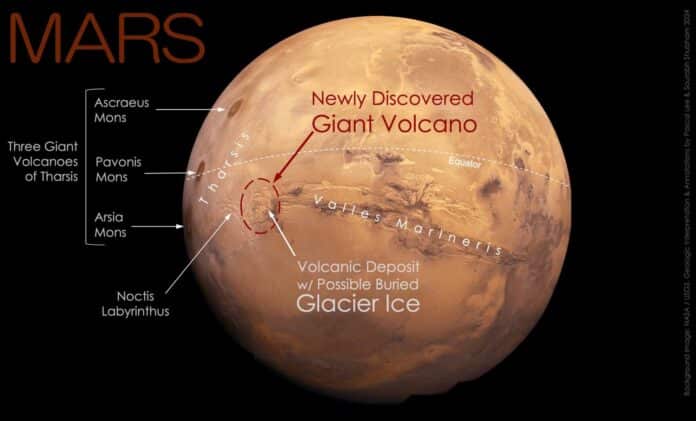At the 55th Lunar and Planetary Science Conference held in The Woodlands, Texas, researchers shared some huge news about Mars. They found a massive volcano and maybe some ice hidden under the ground in a special area on Mars near the equator.
The orbiting spacecraft taking pictures of Mars since the 1970s, but this volcano was challenging to see because it’s deeply eroded beyond easy recognition. The massive volcano had been hiding in plain sight for decades in one of Mars’ most iconic regions, at the border between the massive canyons of Valles Marineris (Valleys of Mariner) and the heavily fractured maze-like Noctis Labyrinthus (Labyrinth of the Night).
Scientists designated this volcano as “Noctis volcano” and situated it at 7° 35′ S, 93° 55′ W. It is 450 kilometers (280 miles) wide and rises to a height of +9022 meters (29,600 feet). The enormous size and intricate history of modifications suggest that it has been active for a very long period. There is a thin layer of recent volcanic material in its southeast, and under that, glacial ice is probably still present.
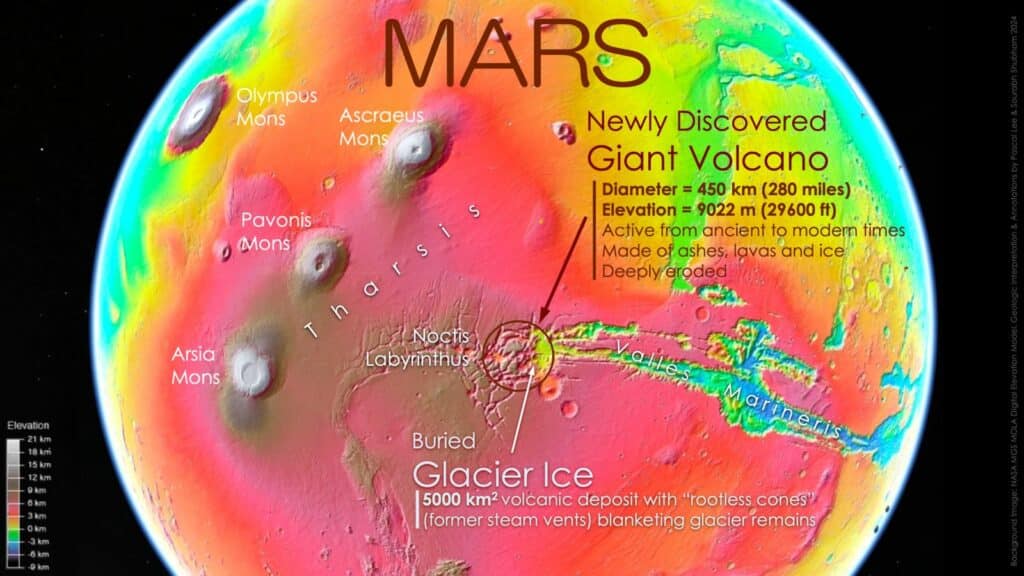
The discovery of this volcano and maybe ice is interesting because it provides:
- A new spot for studying Mars’ history.
- Searching for evidence of life.
- Considering future robotic and human exploration.
Scientists were studying the geology of an area where they found the glacier‘s remains last year. They realized that they were inside a huge and deeply eroded volcano.
In the eastern part of Noctis Labyrinthus, many clues show it’s a volcano. One big clue is the shape of the land. In the middle, some raised areas form a curved line. These raised areas are called mesas. They’re higher up and slope down from the middle. The slopes around these mesas are gentle and stretch out for about 140 miles in different directions. This shape is typical of volcanic areas.
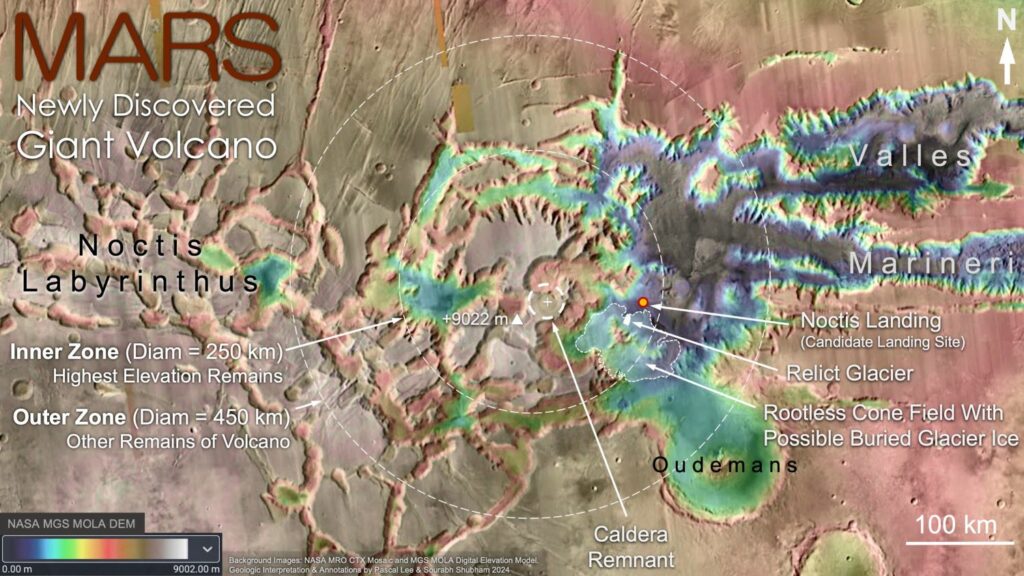
In the middle of this area, there’s something called a caldera remnant. It’s like a leftover piece from a volcanic crater that collapsed. This crater used to hold a lake of lava. Around the area, there are also lava flows, deposits made of different volcanic materials like ash and rocks, and some minerals that have water in them. These things show that there were volcanic activities here in the past.
Sourabh Shubham, a graduate student at the University of Maryland’s Department of Geology and the study’s co-author, said, “This area of Mars is known to have a wide variety of hydrated minerals spanning a long stretch of Martian history. A volcanic setting for these minerals had long been suspected. So, it may not be too surprising to find a volcano here. In some sense, this large volcano is a long-sought ‘smoking gun.'”
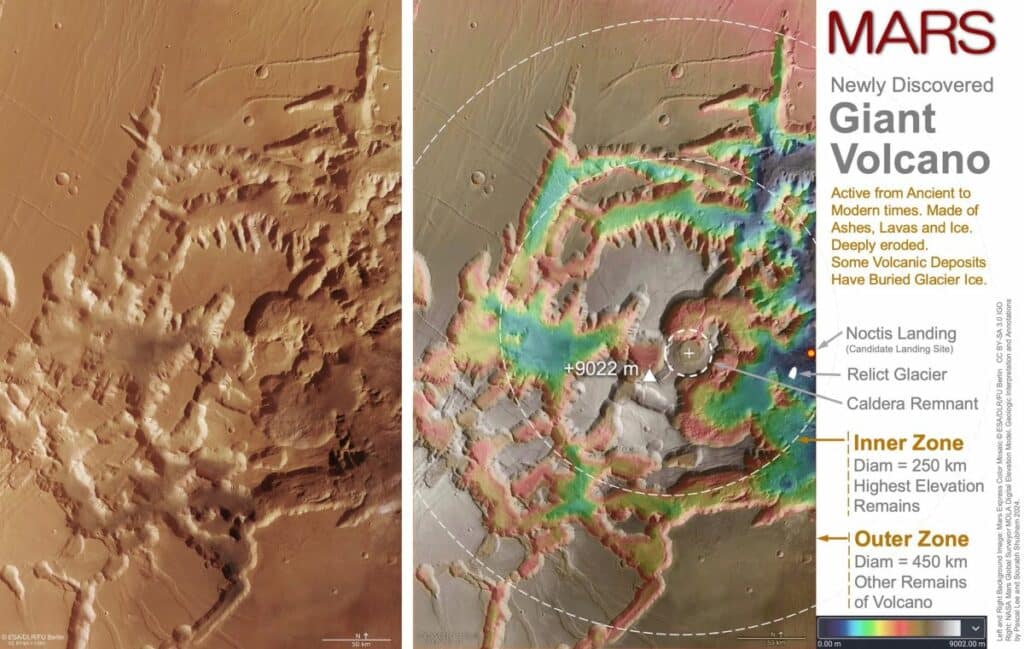
In addition to the volcano, the team discovered a sizable volcanic deposit encircling the area, which is roughly 1930 square miles. In this location, several low, circular, and stretched-out bumps resemble blisters. This is referred to as “blistered terrain.” Scientists think these mounds are “rootless cones,” created when hot volcanic material settles on top of ice or water, resulting in steam-induced explosions or swelling.
In the same volcanic region just a year prior, Lee, Shubham, and their colleague John W. Schutt discovered the remnants of a glacier, maybe an ancient glacier. They saw a light-colored deposit that was primarily composed of jarosite, a sulfate salt. It appeared that the sulfate deposit was created by the reaction of volcanic elements with the ice on top of a glacier.
In our latest investigation, comparable sulfate deposits were discovered in the rootless cones. This implies that a large sheet of glacier ice may be beneath the volcanic material.
Perhaps as a result of glaciers, heat erosion, and fissures, the Noctis volcano has undergone significant alteration over time. Scientists believe it resembles a massive shield composed of layers of ice from previous snowfall, lava, and volcanic debris.
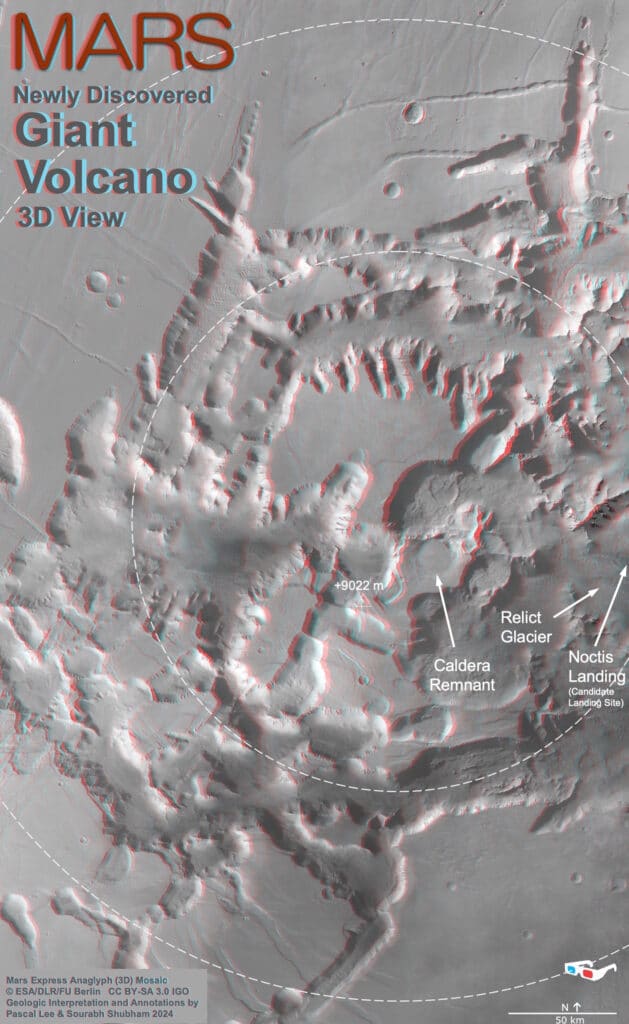
Large sections of the volcano collapsed as the ice beneath it melted, opening fissures and cracks and allowing lava to rise to the surface in various locations.
Subsequent glaciers continued to erode at the volcano, forming the canyons that are visible today. Probably, the “relict glacier” and the possibly buried glacier ice are remnants of the last glacial period that covered the Noctis volcano.
There’s still a lot about this newly discovered volcano. It is known to be active, but since when remains to be determined. It also needs to be clarified if it’s still active and might erupt again, even though it’s had eruptions in more recent times.
As mysteries surrounding the Noctis volcano continue to puzzle scientists, the site is already emerging as an exciting new location to study Mars’ geologic evolution, search for life, and plan future robotic and human exploration.
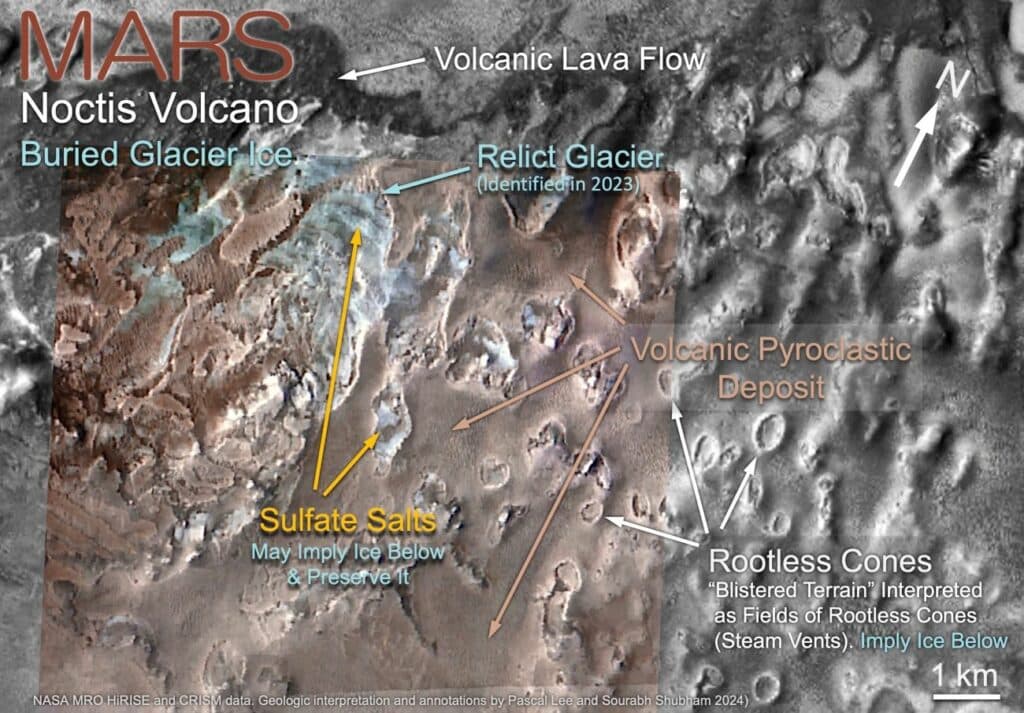
Dr. Pascal Lee, a planetary scientist with the SETI Institute and the Mars Institute based at NASA Ames Research Center, and the lead author of the study, said, “It’s a combination of things that makes the Noctis volcano site exceptionally exciting. It’s an ancient and long-lived volcano so deeply eroded that you could hike, drive, or fly through it to examine, sample, and date different parts of its interior to study Mars’ evolution through time. It has also had a long history of heat interacting with water and ice, which makes it a prime location for astrobiology and our search for signs of life.”
“Finally, with glacier ice likely still preserved near the surface in a relatively warm equatorial region on Mars, the place is looking very attractive for robotic and human exploration.”
